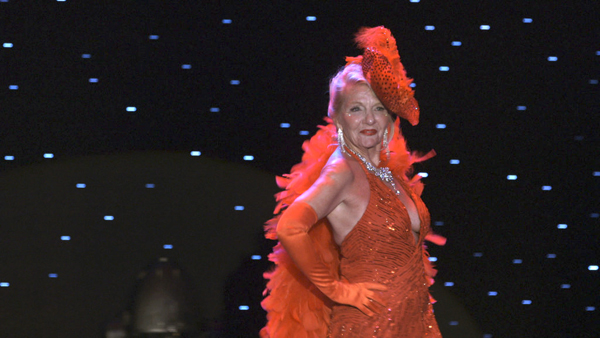What’s that old saying, “You can’t go home again?” This lively documentary, which screened at the recent Miami Film Festival, proves that isn’t always the case. It profiles a group of mature women, all formerly burlesque dancers from the 1960s and ’70s, as they prepare to return to the stage as part of an annual event at Las Vegas’s Burlesque Hall of Fame—even though many of them haven’t performed in decades.
The film’s subjects reflect on their careers while looking ahead to strutting their stuff again, working under such stage names as Camille 2000, the Cosmic Queen of Burlesque; Delilah Jones, the Love Goddess; and perhaps the most tongue-in-cheek of them all, Judith Stein, the Good Beaver of Burlesque (due to her being Canadian). Yes, they were paid to take their clothes off in front of male audiences, most of whom likely viewed them as sexual objects. But one of the film’s biggest surprises is how they talk about the work in largely upbeat terms. For them, it wasn’t just a living but a means at independence and personal fulfillment at a time when neither was easy for women to attain.
Director Rama Rau utilizes a mostly chronological narrative structure, even when she’s jumping back and forth among her large roster of interviewees. While poring over old costumes they wore, props, and other memorabilia, they talk about how they joined the burlesque scenes in Hollywood, Las Vegas, and Detroit and essentially came of age on stage. Many describe feeling a sense of liberation or power for the first time. There’s plenty of archived footage of the dancers in their heyday and, perhaps more importantly, photographs of them as awkward teenagers or young adults before they found burlesque. Through this juxtaposition, just how dramatic a transformation occurred becomes clearer.
The middle section touches on how burlesque briefly crossed over into the mainstream, with some dancers becoming involved, professionally and personally, with filmmakers, such as notable sexploitation director Russ Meyer (of Faster, Pussycat! Kill! Kill! fame). But then comes the late ’70s when porn theaters, stripping (the film defines the difference between a burlesque dancer and a stripper), and more sexually explicit activity in clubs start stealing away audiences. The women also dealt with drug addictions and a variety of other personal issues. It’s a sobering counterpart to the more exuberant and freewheeling tone of the first half.
But through it all, the women never lose their sense of dignity, which makes the ending all the more inspiring. Although they are guests of honor at an event entitled “Titans of Striptease,” many never viewed themselves as being titans of anything; they became performers because it paid better than being a telephone or keypunch operator. Yet Rau clearly sees something in their careers that’s worth lauding and emphasizes the hard work and creativity that went into their stage acts over their risqué nature. (There is nudity, but all in all, not as much as there could have been, given the subject matter.) She also explains some archaic knowledge, such as how burlesque clubs managed to skirt illegality—they would, for example, use certain colored lights to signal to the dancers that the police were in the building and therefore they had to tone things down. These details are fascinating in and of themselves, but they also hint at the risks these women took for a better life—and for self-expression.
Ultimately, League of Exotique Dancers is an upbeat look back on burlesque’s glory days, told through the eyes of one-time practitioners who still have all the right moves.

















Leave A Comment